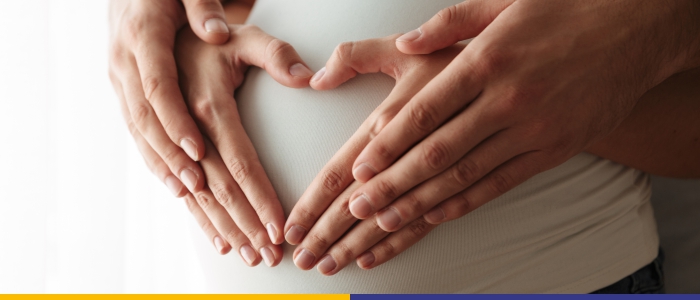
Preeclampsia- All You Need To Know
What is Preeclampsia?
Preeclampsia is a condition that occurs during pregnancy. It is characterised by damage to internal organs, such as the liver and kidneys and high blood pressure. Preeclampsia may occur at any time after the 20th week of pregnancy. Even a slight increase in blood pressure may be a warning sign.
Causes of Preeclampsia
Although doctors have been unable to pinpoint the exact cause of Preeclampsia, some factors that are believed to be responsible for causing Preeclampsia include the following:
- Unhealthy diet
- Certain autoimmune disorders
- Blood vessel conditions
- Genetic factors and family history of Preeclampsia
Risk factors for Preeclampsia
Some risk factors that increase the chances of developing Preeclampsia include the following:
- Pregnancy occurring in the early teens
- Pregnancy in women above 35 years of age
- Pregnancy involving more than one foetus
- First time pregnant mothers are more likely to develop Preeclampsia as compared to those who have had a baby previously.
- A history of diabetes puts you in the high-risk category of developing Preeclampsia
- A history of kidney disorders may also be an indicator of Preeclampsia.
- Obese women are more likely to develop Preeclampsia as compared to women who fall in the normal weight category.
- A history of high blood pressure puts you in the high-risk category of developing Preeclampsia.
- If the baby is conceived through vitro fertilisation, then there is a higher chance of developing Preeclampsia.
Symptoms of Preeclampsia
Some of the most common symptoms of Preeclampsia include the following:
- A sudden increase in weight
- Abnormal swelling on face and in the hands
- A sharp, persistent headache
- Changes in vision
- Decreased output of urine
- Vomiting or nausea
- Reduced platelet count in the body
- Impaired liver function
- The presence of fluid in the lungs causes shortness of breath
It is possible that you do not notice the symptoms of Preeclampsia as they are very easy to miss. Your doctor may need to perform specific tests to confirm the development of Preeclampsia.
Diagnosis of Preeclampsia
There are several tests to diagnose Preeclampsia, some of which include the following:
- Non-stress exam: Your healthcare professional will perform a non-stress exam in the office. This exam measures the heart rate of the foetus as it moves around in your uterus. An irregularity in the recorded heartbeats of the foetus may be indicative of the presence of Preeclampsia. An ultrasound may also be conducted in order to monitor the health of the foetus and check the fluid levels in the uterus.
- Urine test: Excessive protein present in the urine may indicate problems in the body.
- Physical exam: A physical exam conducted by the doctor may result in the diagnosis of Preeclampsia. A blood pressure of 140/90 mm of Hg or higher is indicative of Preeclampsia.
Treatment of Preeclampsia
The delivery of your baby is the only treatment for Preeclampsia.
In case Preeclampsia is discovered early on in the pregnancy, it may cause problems in your pregnancy as your baby needs time to grow inside you and, thus, cannot be delivered very early. In case Preeclampsia is discovered early in the pregnancy, doctors keep a continuous watch on the progress of your pregnancy as well as monitor the growth of your baby intently so as to preemptively solve any complications that may arise owing to Preeclampsia.
In case Preeclampsia is discovered post 37 weeks of pregnancy, your doctor may advise inducing labour so as to prevent further complications in the pregnancy affecting your health as well as that of your baby. Inducing labour post 37 weeks does not pose any health risks to the mother or the baby as, at this time, the baby is minimally premature and developed enough for a safe and healthy delivery.
In case your condition of Preeclampsia is mild and has not progressed enough, your doctor may recommend the following:
- Reducing your salt intake
- Increasing your intake of water
- Getting enough bed rest
- Regular monitoring of the foetus
You may also be prescribed some medication so as to help lower the blood pressure.
Prevention of Preeclampsia
The prevention of Preeclampsia involves making certain lifestyle choices, such as the following:
- Restricting calorie intake
- Reducing the intake of salt
- Consuming more fish and garlic
- Increasing the intake of Vitamin C as well as Vitamin E
- Increasing the calcium intake can also help in preventing Preeclampsia
It is essential to consult your doctor before starting regular consumption of any medication or supplements. Losing weight before getting pregnant, as well as managing conditions, such as high blood pressure and diabetes, can also help you avoid Preeclampsia.At Giggles, we understand the importance of ensuring the complete health and wellbeing of both, the mother as well as the baby. We provide you with the best services and facilities to help monitor and treat Preeclampsia, as well as the best and the most experienced doctors who provide you with unparalleled care every step of the way.
This blog post has been verified by Dr. Radhika Jupally (MBBS, M.S.(OBGYN)